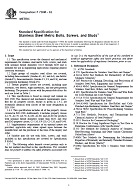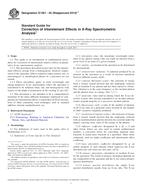1.1 This standard covers a test method for measuring thermal impedance of thin electrical insulation materials.
1.2 This test method is useful with either homogeneous or composite thermally conductive sheet material ranging from 0.02 to 10 mm in thickness.
1.3 This test method measures steady-state heat flux through a flat specimen. Calculations are made as if the specimens were homogeneous. In fact, these materials are usually not homogeneous, but the assumption does not detract from the usefulness of the test methods.
1.4 The term “thermal conductivity” applies only to homogeneous materials. Thermally conductive electrical insulating materials are usually heterogeneous since they typically include fillers, binders, reinforcements such as glass fiber mesh, or a layer of polymeric film. To avoid confusion, this test method uses “apparent thermal conductivity” for measurements of both homogeneous and non-homogeneous materials.
1.5 A limitation of using this test method to calculate apparent thermal conductivity is the problem of accurately determining the specimen thickness. To reflect the commercial practice of measuring thickness as manufactured rather than measuring thickness in an assembly, thickness is determined from measurements made at room temperature in accordance with Method C of Test Methods D 374.
1.6 Thermal impedance test data are influenced by contact pressures, specimen surface characteristics, and the existence of alternate paths for heat transmission which are not through the specimen. This test method determines thermal conduction properties under a specific set of conditions (including a 50°C average test temperature) which may not agree exactly with the conditions in an application. As a result, the degree of correlation between this test method and any particular application needs to be determined.
1.7 The values stated in SI units are to be regarded as standard.
1.8 This standard does not purport to address all of the safety concerns, if any, associated with its use. It is the responsibility of the user of this standard to establish appropriate safety and health practices and determine the applicability of regulatory limitations prior to use.
Note 1 – Earlier versions of this document included a Method B (the Roiseland Method). This method is now deleted because of a lack of general support.
Product Details
- Published:
- 01/01/1995
- Number of Pages:
- 5
- File Size:
- 1 file , 81 KB


